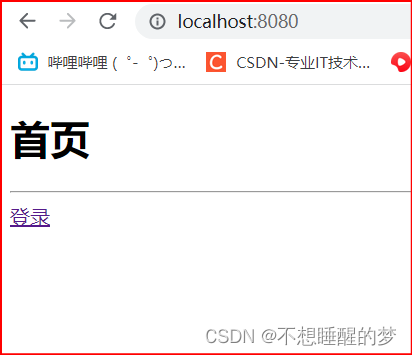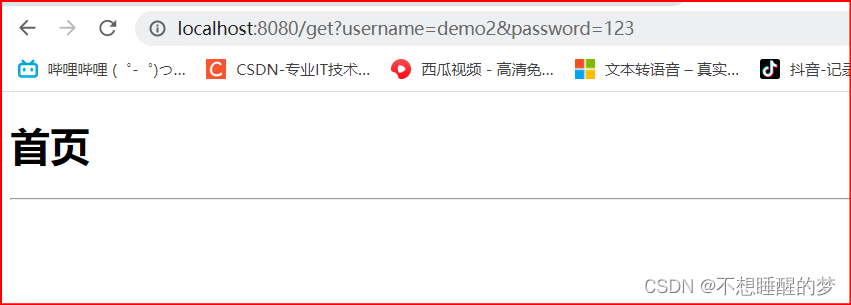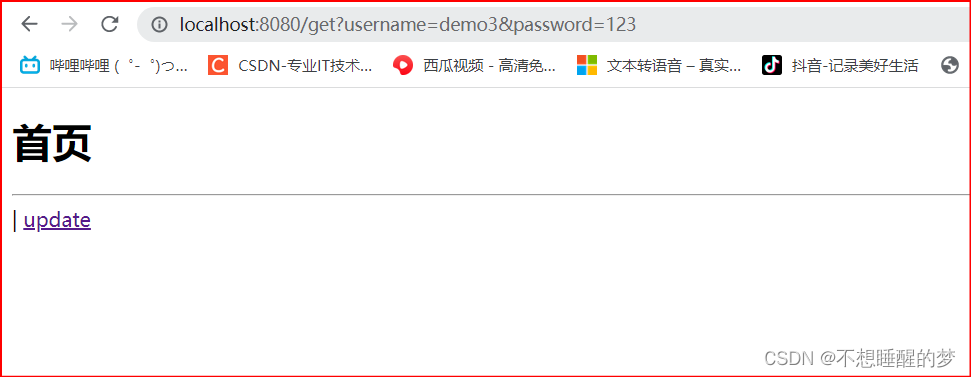SpringBoot基础学习之(二十):Shiro与Thymeleaf的整合版本

还是一样,本篇文章是在上一篇文章的基础上,实施再次进阶
Shiro是一种特别的流行的安全框架,Thymeleaf则是spring boot架构中使用的一种特别引擎。今天介绍的则是它们俩的整合版本。
实现的功能:前端的显示的内容,是根据登录用户的权限来定,不同权限的用户则看到的内容也是不同。
一:导入整合版本的依赖
<dependency><groupId>com.github.theborakompanioni</groupId><artifactId>thymeleaf-extras-shiro</artifactId><version>2.0.0</version></dependency>二:在自定义的配置类中定义整合 Thymeleaf和shiro
//通过ShiroDialect框架:整合thymeleaf和shiro@Beanpublic ShiroDialect shiroDialect(){return new ShiroDialect();}三:设置session属性,传递给前端,用以判断用户是否登录
在认证重写的方法中获取session
Subject subject = SecurityUtils.getSubject();Session session = subject.getSession();session.setAttribute("loginuser",user);完整代码
package com.springboot_shiro.Myconfig;import com.springboot_shiro.pojo.user; import com.springboot_shiro.service.userService; import org.apache.shiro.SecurityUtils; import org.apache.shiro.authc.*; import org.apache.shiro.authz.AuthorizationInfo; import org.apache.shiro.authz.SimpleAuthorizationInfo; import org.apache.shiro.realm.AuthorizingRealm; import org.apache.shiro.session.Session; import org.apache.shiro.subject.PrincipalCollection; import org.apache.shiro.subject.Subject; import org.springframework.beans.factory.annotation.Autowired;public class Realm extends AuthorizingRealm {@Autowiredcom.springboot_shiro.service.userService userService;//授权内容则是在这个接口进行配置@Overrideprotected AuthorizationInfo doGetAuthorizationInfo(PrincipalCollection principalCollection) {System.out.println("执行了授权");//设置来到此页面的用户给他添加一个权限 addSimpleAuthorizationInfo authorizationInfo = new SimpleAuthorizationInfo();//获取当前用户的信息:数据源为下面认证时SimpleAuthenticationInfo类传递过来的Subject subject = SecurityUtils.getSubject();user principal = (user)subject.getPrincipal();//将获取权限值,赋给此时登录的用户authorizationInfo.addStringPermission(principal.getPerm());return authorizationInfo;}//验证则是在这个接口进行配置//获取subject传递来的参数加密的令牌Token,进行认证//AuthenticationInfo是一个接口:return它的的实现类@Overrideprotected AuthenticationInfo doGetAuthenticationInfo(AuthenticationToken Token) throws AuthenticationException {UsernamePasswordToken token =(UsernamePasswordToken) Token; //转换user user = userService.queryUser(token.getUsername());//向前端传递参数session值Subject subject = SecurityUtils.getSubject();Session session = subject.getSession();session.setAttribute("loginuser",user);System.out.println(token.getUsername());if (user==null){return null;}//密码的验证,在spring boot架构中给一个类SimpleAuthenticationInfo可以自动化进行认证return new SimpleAuthenticationInfo(user,user.getPassword(),"");} }
四:在前端进行权限配置
<!DOCTYPE html>
<html lang="en" xmlns:th="http://www.thymeleaf.org">
<head><meta charset="UTF-8"><title>Title</title>
</head>
<body>
<h1>首页</h1>
<hr/>
<!--判断用户是否已经登录-->
<div th:if="${session.loginuser==null}">
<a th:href="@{/tologin}">登录</a>
</div>
<!--只有用户的权限具有add权限,才能成功显示-->
<div shiro:hasPermission="user:add">
<a th:href="@{/add}">add</a>
</div>
<!--只有用户的权限具有update权限,才能成功显示-->
<div shiro:hasPermission="user:update">|
<a th:href="@{/update}">update</a>
</div>
</body>
</html>运行项目:
没有用户进行登录时:

数据库信息:

登录demo1用户时

登录demo2用户

登录用户demo3时



